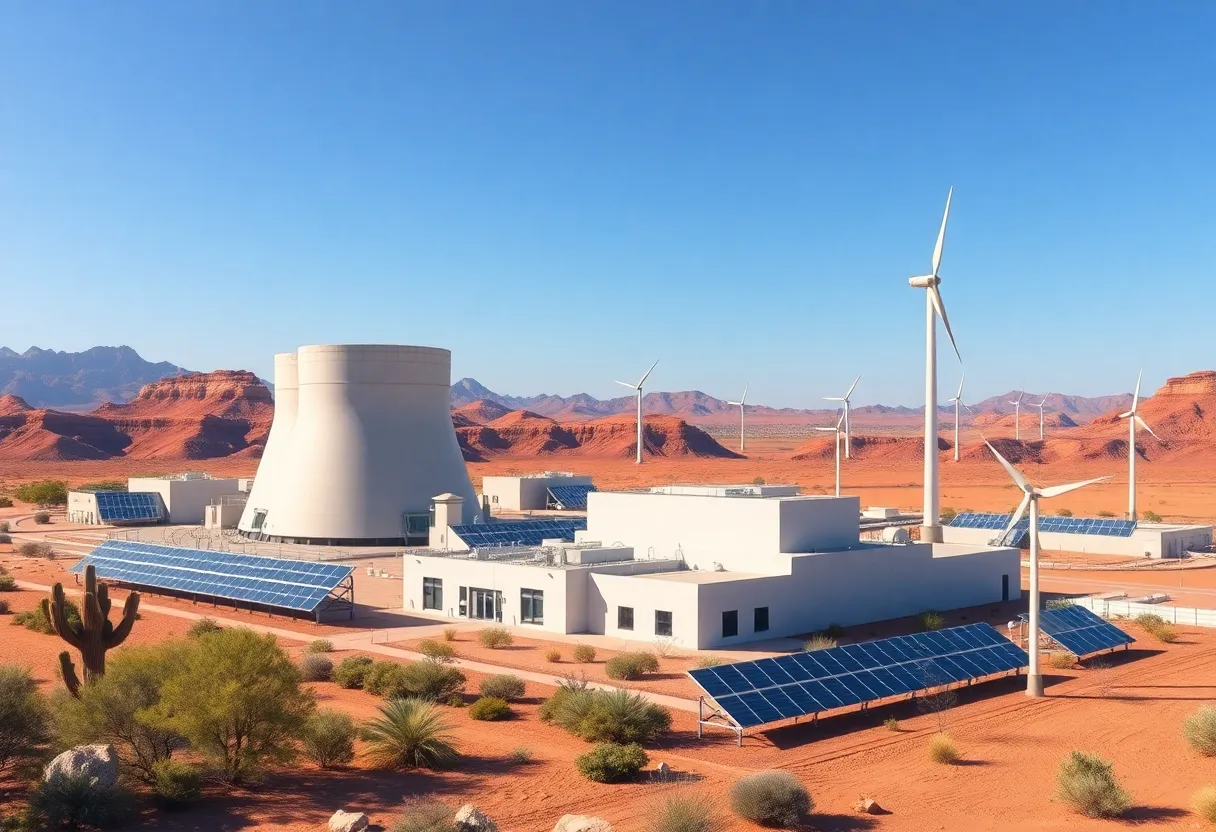News Summary
In response to increasing energy demands, Arizona’s major utilities are considering adding more nuclear power reactors. This initiative aligns with discussions from the Arizona Corporation Commission’s workshops. As the largest nuclear facility in the U.S., Palo Verde Generating Station plays a crucial role in supplying energy. The utilities emphasize the importance of long-term planning for new reactors, aiming for potential operation by the early 2040s, while also addressing rising concerns about costs and consumer impacts.
Arizona – In a move to address the growing energy demands driven by the state’s population and business expansion, Arizona’s three major utilities—Arizona Public Service (APS), Salt River Project (SRP), and Tucson Electric Power (TEP)—are exploring the possibility of adding more nuclear power reactors. This initiative follows discussions at the first of three workshops organized by the Arizona Corporation Commission focused on nuclear energy development.
The workshop featured insights from a variety of experts, including nuclear consultants and representatives from nuclear facilities in Georgia and Canada. The discussions were led by Vice Chairman Nick Myers and Commissioner Rene Lopez, who emphasized the importance of advancing nuclear energy in Arizona’s energy mix.
One of the most significant assets in Arizona’s current energy landscape is the Palo Verde Generating Station, located about an hour west of Phoenix. Operational since the mid-1980s, it stands as the largest nuclear power facility in the United States by capacity and currently supplies about 30% of the state’s energy requirements. Palo Verde also contributes to 4% of the total nuclear generation in the nation.
As demands for energy peak, particularly during the hot summer months—which hit record levels in August 2024—the need for additional power sources is increasingly urgent. APS has proactively applied for a federal grant, in partnership with SRP and TEP, that aims to identify potential sites for new nuclear reactors, including potentially repurposing retired coal plants.
In this context, the utility companies have raised concerns regarding the costs and risks associated with implementing the latest nuclear technologies. Even smaller nuclear reactors, often referred to as small modular reactors (SMRs), could cost around $6 billion each to build. These new technologies are being explored because they can be manufactured off-site, making them potentially less expensive and easier to construct than traditional reactor models. Despite the optimistic outlook for nuclear energy, experts have noted that progress towards new facilities has slowed, with costs remaining a significant hurdle.
A key focus during the workshop was the long-term planning necessary for new nuclear generation, which is projected to take a significant amount of time to develop. The utilities are aiming for potential operational commencement of these new reactors by the early 2040s, highlighting the critical need for continued research and development in this area.
Meanwhile, the potential expansion of nuclear power has sparked concerns among utility watchdogs regarding the financial implications for consumers. Critics reference the high costs associated with nuclear technology and caution against creating an energy landscape that may negatively impact household bills.
The collaboration between Arizona’s utilities is seen as a strategic response to rapid demographic shifts and industrial growth within the state, ensuring a reliable and diverse energy mix that incorporates various sources. As Arizona’s energy landscape also includes natural gas, renewable energy sources such as wind and solar, and coal—which is currently being phased out—the exploration of nuclear energy is positioned as a critical component of future energy planning.
As Arizona awaits feedback on APS’s federal grant application by the end of the year, the commitment from the utilities to pursue nuclear power development remains strong, irrespective of the grant’s outcome. This commitment reflects an ongoing dedication to meet energy demands while maintaining a focus on sustainability and reliability.
Deeper Dive: News & Info About This Topic
- ABC15: Could Arizona See More Nuclear Power Reactors?
- Wikipedia: Nuclear Power in the United States
- RTO Insider: Arizona Utilities Explore Nuclear
- Encyclopedia Britannica: Nuclear Energy
- Power Magazine: Arizona Utilities Announce Effort to Add More In-State Nuclear Power
- Google Search: Arizona Energy Nuclear Power
- AZFamily: SRP, APS, TEP Look to Build Second Nuclear Plant
- Google Scholar: Arizona Nuclear Energy
- State Affairs: Corporation Commission Radiates Support for Nuclear Power Plants
- Google News: Nuclear Power Arizona

Author: STAFF HERE PHOENIX WRITER
The PHOENIX STAFF WRITER represents the experienced team at HEREPhoenix.com, your go-to source for actionable local news and information in Phoenix, Maricopa County, and beyond. Specializing in "news you can use," we cover essential topics like product reviews for personal and business needs, local business directories, politics, real estate trends, neighborhood insights, and state news affecting the area—with deep expertise drawn from years of dedicated reporting and strong community input, including local press releases and business updates. We deliver top reporting on high-value events such as the Waste Management Phoenix Open, Cactus League Spring Training, and Arizona State Fair. Our coverage extends to key organizations like the Greater Phoenix Chamber of Commerce and Visit Phoenix, plus leading businesses in technology and healthcare that power the local economy such as Intel and Banner Health. As part of the broader HERE network, including HERETucson.com, we provide comprehensive, credible insights into Arizona's dynamic landscape.





